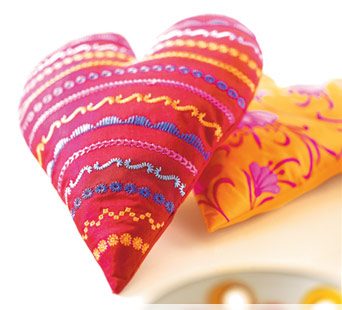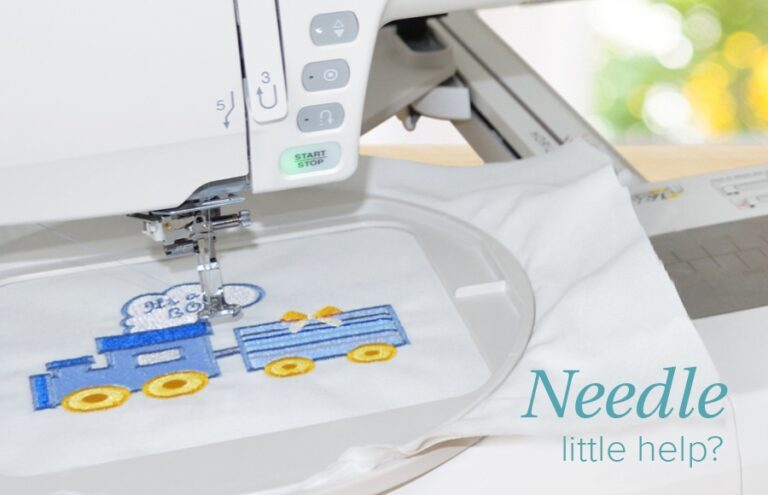1. Introduction to Embroidery Machine Designs
Embroidery is a timeless art form that allows individuals to add unique and personalized designs to various fabric items. With the advent of modern technology, embroidery machines have made the process easier and more accessible, even for beginners. In this article, we will explore the world of embroidery machine designs and provide a comprehensive guide for those just starting their journey in this creative craft. From understanding the basics of embroidery machine designs to learning essential techniques and troubleshooting common issues, this article aims to equip beginners with the knowledge and inspiration to explore the limitless possibilities of embroidery machine designs.
Must-Try Embroidery Machine Designs for Beginners
1. Introduction to Embroidery Machine Designs
Understanding Embroidery Machine Designs
Embroidery machine designs are like little works of art that can be stitched onto fabrics, giving them a unique and personalized touch. These designs are created using special software and then stitched onto the fabric using an embroidery machine. They can range from simple shapes and patterns to intricate and detailed designs.
The Benefits of Using Embroidery Machine Designs
Using embroidery machine designs is a fantastic way to unleash your creativity and add a personal touch to your projects. Whether you’re embellishing a plain t-shirt, creating custom home decor, or making personalized gifts, embroidery machine designs can take your creations to the next level. Plus, they save you time and effort compared to hand-stitching, allowing you to complete projects more efficiently.
2. Essential Tools and Materials for Beginners
Choosing the Right Embroidery Machine
If you’re new to embroidery, choosing the right embroidery machine can be a bit overwhelming. Look for a beginner-friendly machine that offers a variety of built-in designs, adjustable settings, and easy-to-use controls. Consider your budget, the types of projects you want to tackle, and read reviews to find the perfect machine for your needs.
Selecting the Proper Threads and Needles
The type of thread and needle you use can greatly affect the outcome of your embroidery projects. For beginners, it’s best to start with polyester or rayon embroidery threads as they are easier to work with. As for needles, choose ones specifically designed for embroidery to ensure smooth and precise stitching.
Other Essential Tools for Embroidery
In addition to an embroidery machine, you’ll need a few other tools to get started. These include stabilizers to keep your fabric in place during stitching, embroidery hoops to secure the fabric, embroidery scissors for precise cutting, and marking tools to transfer designs onto the fabric. Don’t forget to stock up on bobbins, too!
3. Basic Embroidery Machine Stitches and Techniques
Overview of Different Embroidery Stitches
Embroidery stitches are the building blocks of any design. Some common stitches you’ll encounter are satin stitch, backstitch, cross-stitch, and running stitch. Each stitch creates a different effect and texture, allowing you to add depth and dimension to your designs. Experiment with different stitches and see which ones you enjoy working with the most.
Mastering Basic Embroidery Machine Techniques
Before diving into complex designs, it’s essential to master basic embroidery machine techniques. Practice hooping the fabric correctly, threading the machine, and adjusting the tension. Experiment with different stitch lengths and widths to achieve the desired effect. Take your time and be patient, as embroidery is a skill that improves with practice.
4. Fun and Creative Embroidery Designs for Beginners
Exploring Popular Embroidery Design Themes
Embroidery design themes are as diverse as your imagination. From floral patterns and cute animals to geometric shapes and typography, there’s something for everyone. Explore different design themes and find ones that resonate with your personal style. Don’t be afraid to try something new and experiment with mixing various elements to create your unique designs.
Creating Personalized Embroidery Designs
Once you feel comfortable with the basics, it’s time to let your creativity shine by creating personalized embroidery designs. Whether it’s stitching your initials on a handkerchief or embroidering a favorite quote on a canvas bag, the possibilities are endless. You can also digitize your own designs using specialized software to bring your ideas to life.
Remember, embroidery is not just about the end result but also the joy of the process. Have fun, take risks, and embrace the imperfections that make each piece uniquely yours. Happy stitching!
5. Tips for Choosing and Preparing Designs for Embroidery Machines
Choosing Designs Compatible with Embroidery Machines
When it comes to choosing designs for your embroidery machine, compatibility is key. Not all designs are created equal, and not all will work seamlessly with your machine. Look for designs that are specifically digitized for embroidery machines, as these will ensure the best results. Stay away from fuzzy images or complex designs that might not translate well into embroidery. Remember, simpler is often better!
Preparing and Optimizing Designs for Embroidery
Before you hit that start button, it’s important to prepare and optimize your designs for embroidery. Start by resizing the design to fit your desired hoop size. Next, consider the type of fabric you’ll be embroidering on and make any necessary adjustments to the density and stitch length to ensure the design looks perfect on your chosen material. Finally, run a test stitch to make sure everything is in order before you dive into your main project.
6. Step-by-Step Guide to Embroidery Machine Design Creation
Designing and Digitizing Embroidery Patterns
Creating your own embroidery designs can be a rewarding experience. With the help of design software and a little creativity, you can bring your ideas to life. Start by sketching out your design on paper or using a digital drawing tool. Then, use design software to digitize your design, converting it into embroidery-friendly files. Take your time and experiment with different stitch types and colors to make your design truly unique.
Transferring Designs to Embroidery Machines
Once you have your design ready, it’s time to transfer it to your embroidery machine. Most machines have different methods for transferring designs, such as using USB drives or connecting directly to your computer. Follow the instructions provided by your machine’s manufacturer to ensure a smooth transfer. Keep in mind that some machines may require specific file formats, so double-check before you hit that transfer button.
7. Troubleshooting Common Issues with Embroidery Machine Designs
Troubleshooting Stitch Quality and Tension Issues
Embroidery machines, like any technology, can sometimes have a mind of their own. If you’re experiencing stitch quality or tension issues, don’t panic. Start by checking your needle and thread to ensure they’re compatible with your fabric. Adjusting the tension settings on your machine can also make a big difference. And remember, it’s okay to play around and experiment to find the perfect balance. Trial and error is the name of the game!
Addressing Design Alignment and Hooping Problems
Design alignment and hooping problems can be frustrating, but they’re not impossible to solve. If your design is not aligning properly, double-check that you’re hooping your fabric securely and straight. Take your time to position your hoop accurately, and use additional tools like marking pens or alignment guides to help you out. If you’re still struggling, don’t hesitate to ask for help from fellow embroiderers or consult online tutorials for troubleshooting tips.
8. Inspiring Examples and Projects for Beginners
Showcasing Beautiful Embroidery Machine Projects
Need some inspiration? Look no further! Here are some beautiful embroidery machine projects to ignite your creativity. From delicate floral patterns to cute animal designs, these examples are sure to get your creative juices flowing. Remember, even as a beginner, you can achieve stunning results with practice and a little patience. So, grab your embroidery machine and start stitching!
Exploring Creative Ideas for Beginner Embroiderers
If you’re a beginner looking for creative ideas, we’ve got you covered. How about personalizing a plain tote bag with your favorite quote or designing a unique patch to jazz up your denim jacket? You could also try embroidering cute motifs on tea towels or creating custom monograms for gifts. The possibilities are endless! So, let your imagination run wild and have fun exploring all the creative projects you can embark on as a beginner embroiderer.As you embark on your journey into the world of embroidery machine designs, remember that practice and experimentation are key to mastering this art form. With the right tools, techniques, and inspiration, you can create beautiful and personalized designs that will leave a lasting impression. So, go ahead and unleash your creativity, try new designs, and enjoy the fulfilling process of embroidering with your machine. Happy stitching!
FAQ
1. Can I use any design with an embroidery machine?
Not all designs are compatible with embroidery machines. It is important to choose designs that are specifically digitized for machine embroidery. These designs come in formats such as .pes, .dst, .exp, .jef, and more, which are recognized by embroidery machines. Make sure to check the compatibility of the design file before attempting to embroider it.
2. Do I need special software to create embroidery machine designs?
Yes, creating your own embroidery machine designs typically requires specialized embroidery software. These software programs allow you to digitize and customize your designs, converting them into a format that can be read by embroidery machines. There are various software options available, ranging from beginner-friendly to advanced, depending on your needs and budget.
3. What should I do if my embroidery design is not stitching out properly?
If you are experiencing issues with your embroidery design, such as poor stitch quality or tension problems, there are a few troubleshooting steps you can take. First, check that your machine is properly threaded and the needle is inserted correctly. Ensure that you are using the appropriate stabilizer and fabric for your design. Adjusting the tension settings or changing the needle can also sometimes resolve stitching issues. If problems persist, consult your embroidery machine’s manual or seek assistance from a professional technician.
Related Posts
Discover relevant articles, tutorials, and tips to improve your skills and explore new techniques.
Stay inspired and connected to our embroidery community.






